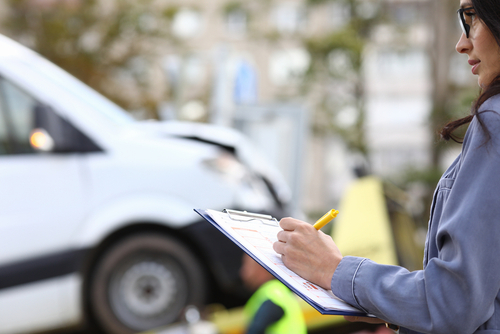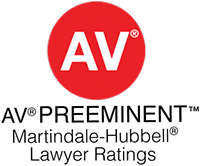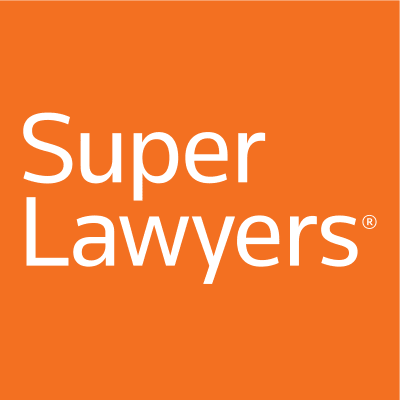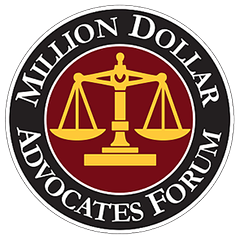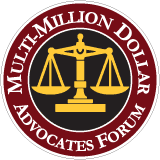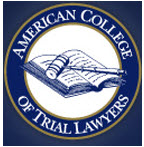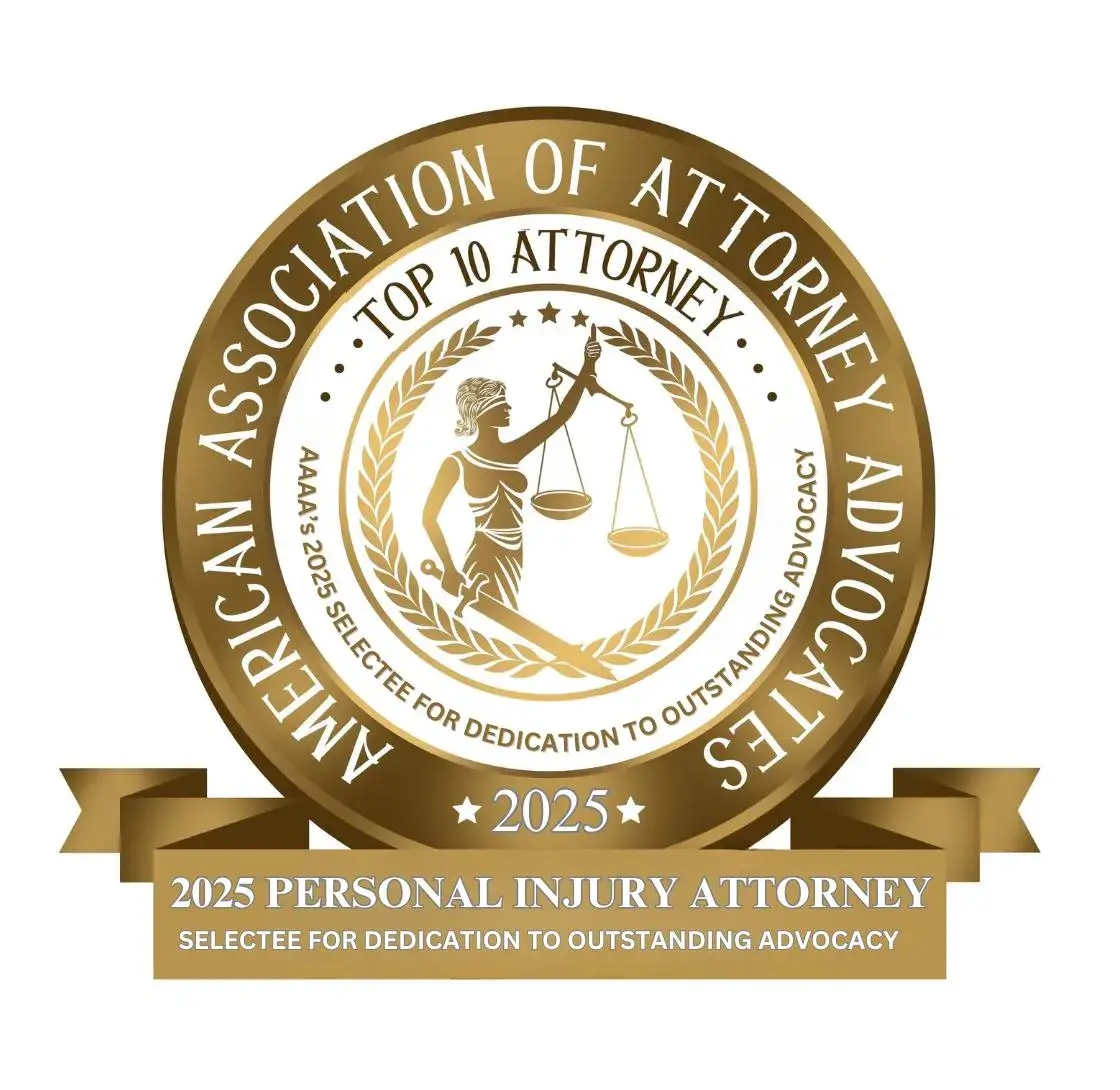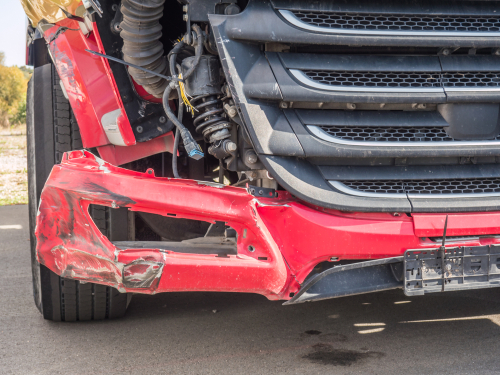
How Comparative Negligence Impacts Your New Jersey Truck Accident Case
In New Jersey, comparative negligence is a legal rule that determines how compensation is handled when more than one person is at fault for an accident. If you’ve been in a truck accident, this means you may still recover money for your injuries even if you are found to be partially responsible.
Under New Jersey’s specific rule, you recover damages as long as your share of the fault is not greater than the other party’s—in other words, 50% or less. Trucking and insurance companies investigate these accidents to find ways to shift blame onto you, which reduces the amount of money they have to pay. A Bergen County truck accident lawyer can counter these tactics, gather evidence, and protect your right to full compensation.
If you have a question about the specifics of your truck accident, contact us at Maggiano, DiGirolamo & Lizzi, P.C. We are here to help. Dial (201) 585-9111 for a free review of your case.
Key Takeaways for How Comparative Negligence Impacts New Jersey Truck Accident Cases
- New Jersey’s 51% rule determines if you get paid. You are eligible for compensation only if your percentage of fault is 50% or less; if you are found 51% or more to blame, you recover nothing.
- Your compensation is reduced by your percentage of fault. Every percentage point of fault assigned to you directly lowers the amount of money you receive from a settlement or verdict.
- Insurance companies use comparative negligence to lower payouts. An insurer’s primary goal is to shift as much blame as possible to you to reduce its financial liability, making an independent investigation essential to protect your claim.
“They Said I Was Partly to Blame.” Why Does This Happen After a Truck Accident?
You have just been through a serious collision with a commercial truck. When you speak to an insurance adjuster, their questions seem designed to make you admit a mistake. You may start to worry that something you did, or failed to do, will prevent you from getting any help for your medical bills and lost wages. Cost of a truck accident injury can rise quickly when ongoing treatment, lost income, and long-term care are added to immediate expenses.
The insurance company for the trucking firm is a business. Its goal is to protect its bottom line, and that involves paying out as little as possible on claims. Assigning a percentage of fault to you is a direct way to reduce the value of your claim. For every percentage point of blame they shift to you, they save thousands, sometimes tens of thousands, of dollars.
They may review your recorded statement for any admission, no matter how small, or misinterpret your words to build a case that you were also negligent. This process makes you feel like you are being put on trial, adding another layer of stress when all you want to do is focus on getting better.
This is precisely why New Jersey has a formal legal standard called “comparative negligence.” The law provides a clear, mathematical formula to handle these situations, ensuring that the insurance company’s opinion is not the final word. Our role is to conduct an independent investigation, gather our own evidence, and present the facts to show exactly how the truck driver or their company was responsible. We work to ensure that blame is assigned based on evidence, not just on the insurance company’s accusations.
What Is New Jersey’s “Modified Comparative Negligence” Rule?
New Jersey follows a specific version of this rule called “modified comparative negligence,” sometimes known as the 51% bar rule. This standard is defined in N.J.S.A. 2A:15-5.1.
Think of it like a scale. The law states that you recover damages for your injuries as long as your percentage of fault does not exceed the fault of the parties you are claiming against. In other words, if your responsibility for the accident is determined to be 50% or less, you receive compensation. If your fault is found to be 51% or more, you are barred from recovering anything at all.
How Does Your Percentage of Fault Affect Your Compensation?
Your compensation is reduced by your exact percentage of fault. This is why the insurance company for the truck driver will work so hard to increase your share of the blame, even by a few points.
Who Decides These Percentages?
An insurance adjuster will offer their opinion on the percentages, but their word is not final. These figures are determined through negotiation, based on the strength of the evidence each side presents. If a fair agreement is not reached, it is ultimately up to a jury to hear the evidence and assign the percentages of fault. This is why having a strong advocate who builds a compelling case is so important. Filing a truck accident lawsuit provides the legal path to present that evidence and secure fair compensation when negotiations fail.
How We Build a Case to Determine Fault in a Truck Crash
We Start by Collecting Every Piece of Evidence
A truck accident case is rarely won based on the police report alone. We dig much deeper to find the objective data that tells the real story.
- The Truck’s “Black Box”: Nearly all commercial trucks are equipped with an Event Data Recorder (EDR) and an Electronic Logging Device (ELD). These devices capture information like the truck’s speed, braking history, steering inputs, and the driver’s hours of service to see if they were driving while fatigued.
- Driver and Company Records: We request the driver’s employment file, training history, driving record, and post-accident drug and alcohol test results. We also look at the trucking company’s history of safety violations under the Federal Motor Carrier Safety Administration (FMCSA).
- Maintenance Logs: Federal regulations require detailed maintenance records. Worn brakes, bald tires, or other equipment failures shift liability directly to the trucking company for putting an unsafe vehicle on the road.
We also examine the scene itself. A crash on the steep grades of the Palisades Interstate Parkway near Englewood Cliffs presents different challenges than one in the heavy commercial traffic around Teterboro Airport or on Main Street in Fort Lee’s Korea Town.
We understand the unique traffic patterns, road designs, and known problem areas in the communities we serve, from the diverse neighborhoods of Teaneck and Hackensack to the bustling streets of Edgewater and Palisades Park.
Working with Accident Reconstructionists
In many cases, we work with accident reconstruction professionals. These are typically former law enforcement officers and engineers who use physics, engineering principles, and software to recreate the collision second by second. Hire a truck accident lawyer to coordinate these experts and present the technical findings that strengthen your claim.
They analyze physical evidence like skid marks, vehicle crush damage, and final resting positions to produce a scientific model of the accident. This analysis shows how the truck driver’s actions, such as speeding or making an unsafe lane change, were the primary cause of the crash, regardless of any minor actions on your part.
Common Scenarios Where Blame Could Be Shared in New Jersey

Comparative negligence typically comes into play in a few common situations. Here is how fault might be assigned in practice.
- Scenario 1: You were driving a few miles over the speed limit when a truck ran a red light. The truck driver’s action of ignoring a traffic signal is the far more serious violation. While the insurance company will argue your speed contributed to the accident, a jury would likely assign the vast majority of the fault (perhaps 80-90%) to the truck driver.
- Scenario 2: You changed lanes on Route 46 in Lodi when a truck in your blind spot hit you. The trucking company may argue you made an unsafe lane change. However, we would investigate if the truck driver was speeding, failed to signal, or was driving in your blind spot for an extended period. If the driver was acting carelessly, they would also bear a significant portion of the fault.
- Scenario 3: It was raining heavily in Teaneck, and you slid while braking, but the truck behind you was following too closely. Professional truck drivers are held to a higher standard and are required by federal law to increase their following distance in poor weather. The Code of Federal Regulations (49 C.F.R. § 392.14) states that drivers must use “extreme caution” in hazardous conditions and reduce their speed. Even if road conditions contributed, the truck driver’s failure to adapt to those conditions would likely place a majority of the blame on them.
What to Do If Multiple Vehicles Were Involved
A truck accident involving two vehicles is complicated enough. Add a third, fourth, or more, and you now face a situation where fault may be split across several drivers, and each insurance company will be working hard to protect its own interests.
This is common in New Jersey, especially on high-speed roads like the New Jersey Turnpike or Route 80, where chain-reaction crashes happen in a matter of seconds. If you were caught in one of these multi-vehicle collisions, your claim may require a more complex legal strategy. But that doesn’t mean you’re powerless. Truck crash investigations often involve multiple parties, and a strong legal team can protect your rights throughout the process.
How Is Fault Determined When More Than Two Vehicles Are Involved?
Each driver’s actions are reviewed separately. The investigation focuses on:
- Who initiated the chain of events (such as the driver who rear-ended the first car)
- Whether any drivers followed too closely or changed lanes unsafely
- Road conditions, traffic patterns, and timing
In a five-car pileup, for example, one truck may have caused the initial crash, but if another driver was speeding or failed to maintain control, they could also be assigned partial responsibility for injuries that occurred later.
Why It Matters: Fault Isn’t Shared Equally
New Jersey’s comparative negligence law still applies. This means:
- You can recover compensation only if your share of the fault is 50% or less
- Your compensation will be reduced by your percentage of fault
What You Should Do
Do Not Rely on One Police Report
In a multi-vehicle collision, there may be more than one crash report, especially if separate officers arrived at different times or addressed separate sequences. We request all available reports, as well as dispatcher logs, 911 calls, and witness statements.
Let Your Legal Team Handle Insurance Communications
When more than one insurer is involved, you could be contacted by several adjusters. Each may ask for a statement or try to get you to admit fault. Politely decline and direct them to your attorney. Giving inconsistent or incomplete statements in a multi-party crash, even if by mistake, could easily harm your case. Damages can you recover after a serious trucking accident depend on the full scope of your injuries, lost income, and long-term needs, so having a lawyer handle these conversations protects the value of your claim.
Know That You May Have Claims Against Multiple Parties
In many of these cases, you may be entitled to pursue compensation from more than one driver. For instance:
- The truck driver for unsafe driving
- A third vehicle for contributing to a second impact
- A logistics company for overloading cargo or pushing unsafe deadlines
We investigate each party’s role and identify all available insurance coverage, including policies that may apply through your own underinsured motorist coverage if another driver lacks sufficient insurance.
Why These Cases Require Immediate Legal Action
Multi-vehicle collisions often trigger finger-pointing between drivers, delays in insurance responses, and pressure on you to settle quickly. At Maggiano, DiGirolamo & Lizzi, P.C., we step in early to preserve evidence, hire accident reconstruction experts, and ensure that your share of fault is fairly assessed.
Frequently Asked Questions About Comparative Negligence in Truck Accidents
What if I apologized at the scene? Does that mean I admitted fault?
Saying “I’m sorry” is a natural human reaction. It does not automatically mean you are legally admitting fault for the crash. The other side may try to use it against you, but it is just one piece of information among all the other evidence.
The trucking company’s insurance has already offered me a settlement. Why shouldn't I take it?
Early settlement offers are an attempt to resolve a claim for a low amount before the full extent of your injuries and financial losses are known. Accepting it closes your case for good, even if your medical needs turn out to be more serious. We advise having any offer reviewed before you agree to it.
How long do I have to file a truck accident claim in New Jersey?
In New Jersey, the statute of limitations for personal injury claims is generally two years from the date of the accident (N.J.S.A. 2A:14-2). However, there are exceptions, such as claims against government entities, which have a much shorter notice period of just 90 days. Understand the specific deadline for your case.
I was a passenger in a car hit by a truck. Can comparative negligence affect my claim?
Generally, a passenger is not at fault for a collision. You would have a claim against the truck driver and potentially the driver of the car you were in. The fault would be apportioned between the drivers, but it typically would not reduce your recovery.
My accident happened on the George Washington Bridge. Does New York or New Jersey law apply?
This is a difficult question that depends on the exact location of the crash and other factors. Each state has different negligence laws; New York, for example, uses a “pure” comparative negligence rule that allows you to recover damages even if you are 99% at fault. We have deep experience handling cases that involve these cross-jurisdictional issues.
Don’t Let a Blame Game Deny Your Recovery

Being partly at fault does not automatically end your case in New Jersey. The insurance company’s opinion of who is to blame is just that—an opinion. It is not the final word. The law was designed to ensure that injured people still get help, even if they are found to share a small amount of the responsibility.
You have been through a traumatic event. You do not have to face the trucking and insurance companies alone. If you’re worried about how shared fault might affect your truck accident case, let’s talk about the specific facts.
Call Maggiano, DiGirolamo & Lizzi, P.C. today for a no-cost consultation at (201) 585-9111.



